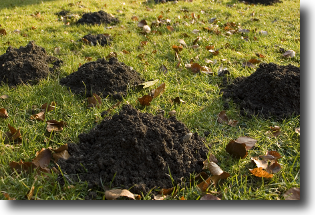Alice is visiting a friend of her’s farm in Wales. As she walks through one of the fields with the family they flattened all the molehills as they came to them. The kids had a lot of fun making the molehills go away.
A mountain is much larger than a molehill and flattening it is not easy.
Alice’s yoga teacher told her before she left on her trip that it is better for your back to make mountains out of molehills. This puzzled Alice because she thought the expression was “don’t make a mountain out of a molehill”. Her yoga teacher assured her that in your yoga practice it is better to “make a mountain of a molehill”.
Where is the molehill in your yoga practice
The molehill appears most often when you are doing yoga poses that include a forward fold.
You bring your torso forward and down towards your mat like your teacher demonstrated. Your teacher can lay their torso flat on the mat between their legs.
You attempt to duplicate your teacher and you bring your head closer and closer to the floor. To get closer to the floor you round your back creating a molehill. Rounding your back will get your head but not your torso closer to the floor.
When Alice rounds her back and makes a molehill she causes a lot of problems for her back. First we look at why Alice rounded her back and then we will look at the problems that created.
Why does the molehill happen
Alice makes a molehill when she folds forward because her hips do not have enough flexibility. They get stuck moving part way forward.
Alice’s teacher has a lot more flexibility in her hips and is able to bring her hips much further forward.
When Alice tries to emulate her teacher she rounds her back creating a bunch of problems.
What is wrong with the molehill
When Alice creates a molehill she brings her ribs down towards her hips. This movement compresses her abdominal organs.
Rounding your back removes the natural curves and in fact reverses the curve in your lower back. This reverse curve can cause herniated disks in your lower back and it also stresses the muscles in this area.
Making too may molehills will lead to a sore lower back.
The best way to protect your lower back is to fill in the molehills like the kids are doing on the farm and make a mountain.
How to make a mountain out of your molehill
Once you realize that you have made a molehill you take these steps to fill it in and create a mountain.
Benefits of a mountain
– protects your lower back
– decompresses your abdomen
– stretches your hips more
Lift your ribs away from your hips is the first step in creating a mountain. This one action will straighten your spine.
At the time that you lift your ribs, engage Uddiyana Bandha, your lower abdominal muscle lock. When you do this you are engaging and strengthening your lower back muscles.
These two actions build your mountain and protect you from injuring your lower back. There is another benefit to building a mountain out of your molehill.
What are the benefits of the mountain
Building your mountain removes the compression from your abdominal organs.
It also protects your lower back by restoring the natural curves to your spine.
The focus of your stretching moves from your lower back into your hips. At the same time it requires your hips to move forward.
There is one drawback when you build a mountain out of your molehill.
But I do not fold forward as far when I make a Moutain
Alice discovers that when she builds a mountain out of her molehill that she is not as close to the mat as she once was.
Now that the focus of the stretching is in your hips, they are more likely to reach their limit of forward movement.
This is when you start working with your edge. As you breathe in and out at a slow pace, you let your torso rise up a small amount and then move forward and down again. It is this small movement that increases the flexibility of your hips over time. Using your Edge you avoid injuring the muscles and tendons in your hip and thigh joint.
Summary
There are lots of molehills to fill in as Alice walks around the farm with her friend and family. Luckily there is only one molehill in her yoga practice.
Alice replaces her molehill with a mountain. She lifts her ribs away from her hips and brings her torso forward and down towards her mat.
Next Step
The next time you are doing a forward fold check your back to see if you are making a molehill and turn it into a mountain if you are.
Additional Reading
You can find the origin of the phrase “don’t make a mountain out of a molehill” at Wikipedia.
To learn more about using your edge in your yoga practice read the article How the rolling pin factor works with your edge
How to use the steam engine to find your edge shows you how to combine your breath with your edge to improve your flexibility.




